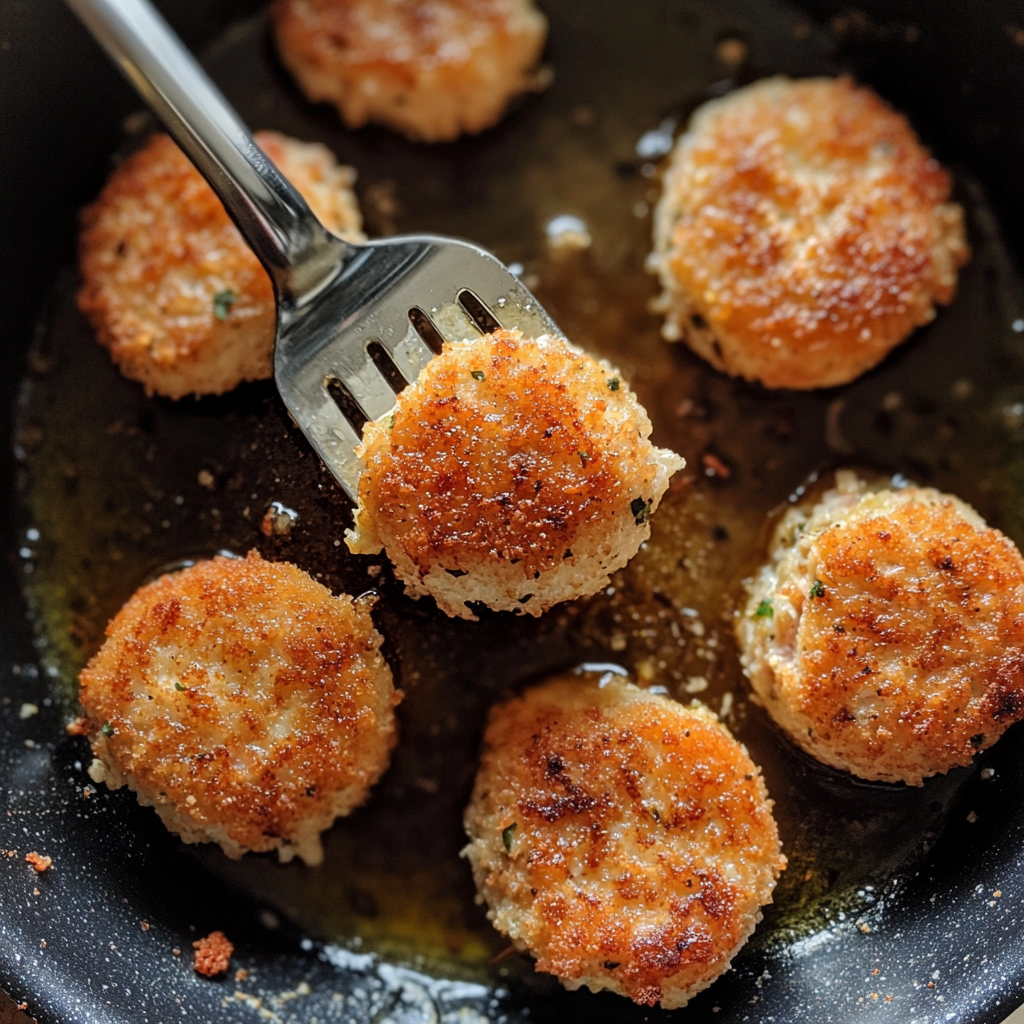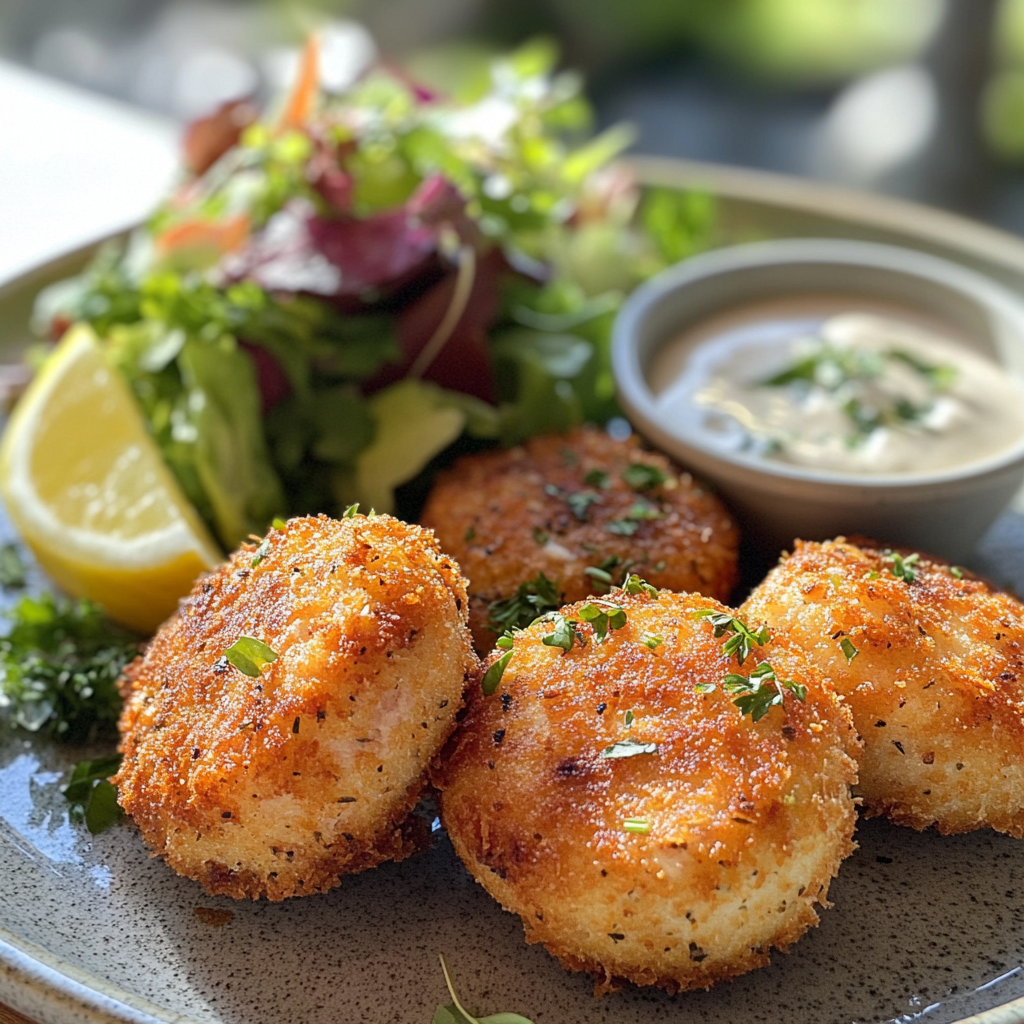Salmon croquettes are a popular dish, but a common issue many people face is having them fall apart while cooking. If you’ve ever asked yourself, “Why do my salmon croquettes fall apart?” then you’re in the right place! In this article, we’ll explore the reasons behind this problem and provide practical solutions to ensure your croquettes come out perfectly every time. With this guide, you’ll learn how to troubleshoot your recipe, ensuring your croquettes stay firm and crispy.
Common Reasons Why Salmon Croquettes Fall Apart
Making salmon croquettes might seem straightforward, but several small mistakes can lead to your croquettes crumbling. Let’s walk through the most common reasons why your salmon croquettes fall apart and how you can avoid these pitfalls.
1. Lack of Proper Binding Ingredients
One of the primary reasons salmon croquettes fall apart is the absence of proper binding agents. Binding agents are essential to hold the croquette mixture together. Without these, the mixture becomes too loose, and the patties won’t hold their shape during cooking.

The most common binders include:
- Eggs: Eggs are the top binding agent. They provide structure and firmness, helping keep the ingredients together.
- Breadcrumbs or Crackers: Dry ingredients like breadcrumbs, panko, or crushed crackers help soak up any excess moisture and add firmness to the croquettes.
- Mashed Potatoes: Potatoes can also serve as an excellent binder, giving the croquettes a soft, smooth texture while holding them together.
To fix croquettes that fall apart due to binding issues, consider adding an extra egg or some more breadcrumbs to your mixture. For a deeper dive into alternative binding agents, explore our substitutes for breadcrumbs in salmon patties.
2. Too Much Moisture in the Mixture
Another common issue that causes salmon croquettes to fall apart is excess moisture in the mixture. Too much moisture makes the patties loose and difficult to form. This problem often arises when using canned salmon, which can be wet or packed in oil.
Solution:
- Drain the Salmon: If you’re using canned salmon, make sure to drain it thoroughly. You can even press it between paper towels to remove as much excess liquid as possible.
- Control Wet Ingredients: Avoid adding too many wet ingredients like mayonnaise or mustard, which can make the mixture too runny.
- Adjust with Dry Ingredients: If the mixture still feels too wet, adding extra breadcrumbs, panko, or flour can help absorb the moisture and bind the croquettes better.
Too much moisture is a common mistake, but understanding how to balance the ingredients can prevent your croquettes from falling apart. You can find similar insights in our recipe for old-fashioned salmon patties, which balances ingredients perfectly to create firm and flavorful patties.
3. Not Letting the Mixture Rest
Patience is key when making croquettes. Many cooks skip the crucial step of allowing the mixture to rest before forming and cooking the patties. Resting time is essential because it gives the ingredients time to bind and firm up.
Solution:
- Chill the Mixture: After mixing all your ingredients, cover the bowl and place it in the refrigerator for at least 30 minutes. This chilling period allows the binding agents, like eggs and breadcrumbs, to work their magic, making the mixture firmer and easier to shape.
By letting the mixture rest, you’ll have croquettes that are much easier to form and cook without them crumbling. For a variation on this technique, explore our guide to making salmon bites for a chilled and firm approach to smaller, bite-sized croquettes.
4. Cooking Temperature Issues
Temperature control during the cooking process is crucial. Salmon croquettes need to be cooked at the right temperature to ensure they hold together and develop a crispy exterior without falling apart.

Solution:
- Medium-High Heat: Cook your croquettes over medium-high heat. The oil should be hot enough to create a crisp outer layer but not too hot that it burns the croquettes before the inside cooks.
- Preheat the Pan: Make sure the oil in the skillet is properly heated before placing the croquettes in the pan. If the oil is too cold, the croquettes will absorb too much oil and become soggy, which can cause them to fall apart.
Temperature mishaps are common, but ensuring the right cooking temperature will help your croquettes stay intact. Want to see how cooking temperature impacts other recipes? Check out our king salmon recipe for expert cooking tips and temperature control.
5. Overhandling the Patties
Handling croquettes too much while forming or cooking them can also cause them to fall apart. Too much pressure when shaping the patties or flipping them too often can weaken their structure.
Solution:
- Gentle Forming: Use a light touch when forming the croquettes. Overpacking them can lead to dense, crumbly croquettes.
- Flip Once: Try to flip the croquettes only once during cooking. Constantly flipping or pressing down on them can cause them to break.
Being gentle with your croquettes will ensure they maintain their shape. For tips on handling other types of delicate fish, take a look at our smoked salmon recipe guide.
How to Prevent Salmon Croquettes From Falling Apart
Now that we’ve covered the common reasons why salmon croquettes fall apart, let’s dive into more specific solutions. These tips will help you prevent your croquettes from crumbling during cooking and ensure you serve perfect, flavorful croquettes every time.
1. Use Eggs as a Binder
Eggs are one of the best binding agents you can use in any croquette recipe. They provide structure, help hold the ingredients together, and prevent the croquettes from falling apart.
How to Use Eggs Correctly:
- Add One Egg: Start with one egg in your salmon mixture. If the patties still feel loose, you can add another egg or even just an egg yolk for extra binding power.
- Egg-Free Alternatives: If you’re looking for an egg-free option, consider using flaxseed meal or chia seeds mixed with water, as they can provide a similar binding effect.
Using eggs as a binder is a tried-and-true method. For more ideas on how to keep your croquettes firm, check out our what to use to keep salmon patties from falling apart guide.
2. Choose the Right Amount of Filler
Fillers like breadcrumbs, panko, or crushed crackers are key to giving your croquettes the right texture. However, adding too much filler can make the croquettes dry and crumbly.
How to Get the Right Ratio:
- 1 Cup of Filler to 1 Can of Salmon: This is a good starting point, but you may need to adjust depending on the moisture content of your ingredients.
- Don’t Overdo It: Too much filler can lead to dry, dense croquettes, so be sure to add just enough to absorb excess moisture without making the mixture overly dry.
Finding the right balance between salmon and filler is crucial for the perfect croquette texture. Learn more about how to balance ingredients in our traditional salmon patties recipe.
3. Chill the Patties Before Cooking
As we mentioned earlier, chilling your salmon croquettes before cooking them can help firm up the mixture, ensuring the patties hold together during the cooking process.
How to Chill Correctly:
- Chill for 30-60 Minutes: Once you’ve formed the croquettes, place them in the refrigerator for at least 30 minutes, but an hour is ideal.
- Freeze for Future Use: You can also freeze the croquettes for later use. Flash freeze the patties on a baking sheet for about an hour before transferring them to an airtight container for long-term storage.
Chilling your patties can be the difference between crumbling croquettes and perfectly formed ones. For a creative take on salmon, explore our recipe for smoked salmon bites and discover how chilling is key for creating bite-sized snacks.
4. Use Fresh Salmon for Firmer Patties
While canned salmon is convenient and budget-friendly, using fresh salmon can improve the texture and firmness of your croquettes.
How Fresh Salmon Helps:
- Drier Texture: Freshly cooked salmon tends to be drier than canned salmon, making it easier to form the patties and reducing the likelihood of them falling apart.
- More Flavorful: Fresh salmon also provides a richer, fresher flavor that can elevate your croquettes.
If you want to experiment with fresh salmon croquettes, consider using leftovers from our king salmon recipe. It’s a delicious way to use fresh ingredients for a firmer texture.
5. Avoid Overcooking
Finally, overcooking your croquettes can cause them to become dry and crumbly. Salmon croquettes should have a golden-brown crust on the outside while remaining moist and flavorful on the inside.
How to Avoid Overcooking:
- Crisp the Outside: Cook each side of the croquettes for about 3-4 minutes over medium-high heat. Once they’re golden brown, remove them from the pan.
- Don’t Leave Them on Too Long: Don’t leave the croquettes in the pan for too long, as this can dry them out and make them crumbly.
Avoiding overcooking is key to keeping your croquettes intact. If you’re looking for more cooking techniques, our smoked salmon recipe guide includes helpful tips on cooking fish to perfection.
Conclusion
Perfecting salmon croquettes might take a little practice, but with these tips and tricks, you’ll be able to avoid common mistakes and enjoy delicious, crispy croquettes every time. From ensuring the right binding agents to controlling moisture levels and cooking temperatures, each step plays a crucial role in creating croquettes that hold together.

Whether you’re a seasoned chef or just starting out in the kitchen, these insights will help you tackle any issue that may cause your croquettes to fall apart. Don’t forget to explore more of our salmon recipes, including salmon bites and our complete smoked salmon recipe guide, to continue refining your seafood cooking skills.
By following these steps, you can confidently serve salmon croquettes that are perfectly golden, crispy on the outside, and flavorful inside — without any fear of them falling apart!

